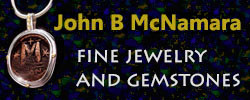Product Description
A real treasure from the ancient Muslim world, this genuine bronze fals coin was minted between 685 - 705 AD under the first Islamic dynasty, the Umayyad caliphate. This fine ancient bronze Umayyad coin is set in a high polished handmade sterling silver cast pendant setting in a unisex design making this pendant equally fitting for wear by either a man or woman. The coin features excellent detail and the tone of the ancient bronze wonderfully contrasts with the bright silver of the pendant mounting.
*** Chain is not included but may be purchased additionally, at the link below
ADD THE DISPLAYED STERLING SILVER ROUNDED BOX CHAIN NECKLACE
MORE ANCIENT ISLAMIC COIN JEWELRY
HISTORY
The Umayyad caliphate was founded in 661 AD by the leader of the Banu Umayya, Mu'awiya bin Abi Sufyan. Coins were first struck in 685 AD by the ruler Abd al-Malik. The Umayyads ruled for 90 years and extended their control through Northern Africa to Morocco and then into Spain and even to Southern France. At the same time, they moved as far east as Afghanistan and India. Their capital was located in Damascus.
The Umayyad Caliphate ruled over a vast multi-ethnic and multicultural population. Christians, who still constituted a majority of the caliphate's population, and Jews, were allowed to practice their own religion but had to pay the jizya (poll tax) from which Muslims were exempt. Muslims were required to pay the zakat tax, which was earmarked explicitly for various welfare programs for the benefit of Muslims or Muslim converts.
Under the early Umayyad caliphate, prominent positions were held by Christians, some of whom belonged to families that had served the Byzantines. The employment of Christians was part of a broader policy of religious accommodation that was necessitated by the presence of large Christian populations in the conquered provinces, as in Syria. This policy also boosted Mu'awiya's popularity and solidified Syria as his power base. The Umayyad era is often considered the formative period in Islamic art.
 US Dollars
US Dollars
 AUD
AUD
 CAD
CAD
 POUNDS STERLING
POUNDS STERLING














